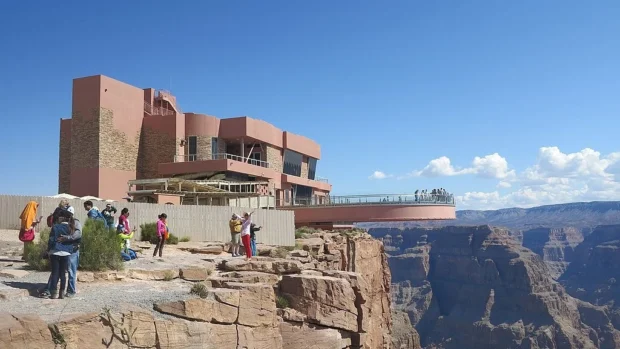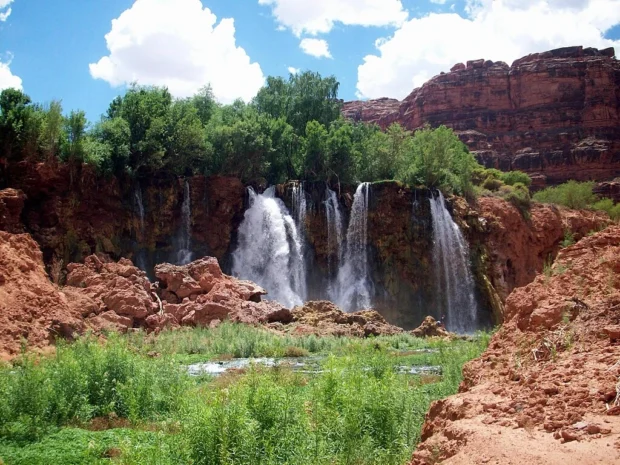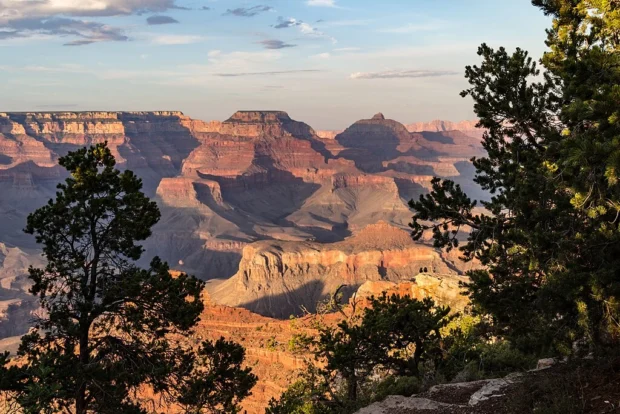Visiting the Grand Canyon means stepping into a vast natural wonder carved over millions of years. This massive canyon in the United States attracts millions each year, but there’s much more to experience than just a quick glance from the rim. Whether you stay on the South Rim or venture down into the canyon, understanding how to get around and where to spend your time helps turn a trip into a memorable experience.
Table of Contents
The Grand Canyon’s immense size and complex layout require some planning. From shuttle buses to hiking trails, it offers various ways to explore this geological masterpiece. Yet, it’s not just nature’s angles and colors; the history and culture around the area add depth to every step taken here.
How to Get to and Around the Grand Canyon
First, let’s talk about getting here. The closest major airport is in Flagstaff, about 80 miles from the South Rim. Another option is Phoenix Sky Harbor Airport, which is roughly 230 miles away but offers more flights and airlines. From either airport, you’ll find shuttle services and bus lines that connect to the Grand Canyon Village-the main hub for visitors. These services avoid the need for renting a car, which can be a relief especially in peak seasons when parking is limited.
Inside the park, the Grand Canyon Shuttle Bus system is the key to efficient travel. This free service connects popular viewpoints and trailheads along the South Rim. It runs frequently and is well-organized, making it easy to visit different lookout points without worry.

One quirky detail: some shuttle stops have helpful signs showing real-time bus arrivals, which is a modern convenience amid such an ancient landscape. If you prefer biking, there are designated cycling paths along parts of the rim road, but remember that rental options are limited and the terrain can be challenging.
Where to Stay Near the Canyon
Accommodation varies from rustic lodges near the rim to cozy guesthouses in nearby towns like Tusayan. Staying inside the park offers the advantage of early access to trails before the crowds arrive. However, if you seek more variety or lower prices, towns 30-40 minutes away provide quiet, often family-run inns and motels.
Many visitors choose to stay on the South Rim because it offers the most visitor services and viewpoints. The North Rim, by contrast, closes during winter months and has fewer facilities, but it is a quieter place for those who want solitude. Wherever you stay, booking well in advance is essential, especially in summer.
Discovering Not-So-Obvious Canyon Sights
While the main lookout points like Mather Point and Yavapai Observation Station are breathtaking, some lesser-known spots provide postcard-worthy views without the heavy crowds. For example, the Lipan Point offers stunning views of the Colorado River winding through the canyon, and it tends to be quieter early in the day.

Another interesting visit is the Desert View Watchtower. This stone tower, designed by architect Mary Colter in the 1930s, includes Native American-inspired art and offers a panoramic lookout. The tower’s location at the eastern entrance of the park is reachable by shuttle or car and rewards visitors with a different perspective on the canyon’s scale.
Don’t miss the historic Grand Canyon Village itself. Here you’ll find old lodges, the El Tovar Hotel, and the Kolb Studio, which was once a photography studio perched right on the canyon edge. The stories of early explorers and artists who helped popularize the canyon’s beauty are woven into these buildings.
Tasting the Region: Food and Drink Options Nearby
After a day of hiking or sightseeing, you might want to enjoy some food that’s tied to the area’s culture. While inside the park, eateries mostly offer American-style meals, but nearby towns add more flavor. Flagstaff, for instance, boasts several restaurants with southwestern dishes, including Navajo fry bread and green chile stews.
In Tusayan, a small town just outside the south entrance, you’ll find casual diners serving hearty meals perfect for refueling. A favorite for many locals and visitors alike is trying a bison burger-a nod to the region’s wildlife heritage.

Culture and Customs Around the Grand Canyon
The Grand Canyon area is home to several Native American tribes, including the Havasupai, Hopi, and Navajo. Their presence is a vital part of the canyon’s identity. When visiting, respect is key. For example, avoid climbing on ruins or sacred sites and always ask permission before photographing people or their cultural artifacts.
A small but important custom is to stay on marked trails-it helps protect fragile plant life and prevents accidents. Also, be mindful of wildlife by not feeding animals; it’s better for their health and yours. Friendly locals often share stories about the canyon’s myths, like tales of the thunderbird-a legendary creature said to protect the land.
Something Different: Fun Facts and Hidden Details
Did you know that the Grand Canyon is not the deepest canyon in the world? That title belongs to the Yarlung Tsangpo Canyon in Tibet. Still, the Grand Canyon’s vastness and layered rocks tell an incredible geological story spanning nearly two billion years.
Another interesting note: the Colorado River at the bottom of the canyon moves surprisingly fast, carving the rock over time. Rafting trips down the river start from the nearby town of Lees Ferry and can last from a single day to two weeks.

There’s also a quirky little museum near the South Rim that many visitors miss. The Tusayan Ruin and Museum offers a glimpse into the lives of the Ancestral Puebloans who lived here centuries ago. It’s a short walk from the visitor center and is a peaceful place to reflect on human history in this vast landscape.
Planning Efficient Visits and Staying Safe
Because the Grand Canyon is so large and popular, timing your visit carefully makes a big difference. Early mornings or late afternoons provide softer light for photography and fewer tourists. Also, the weather can change quickly, especially if you descend into the canyon where temperatures may be much higher than at the rim.
Bring plenty of water and wear sturdy shoes if you plan to hike. Shuttle schedules can change seasonally, so check current information upon arrival. If you prefer walking, understand that distances between viewpoints can be several miles.
The park’s website offers detailed maps and guides that help navigate transportation options and daily events. This helps avoid confusion, especially during busy months.

For more details about official park services and shuttle schedules, you can visit the Grand Canyon National Park’s official site.
In summary, the Grand Canyon is much more than a big hole in the ground. It’s a place where nature’s power combines with human history and modern logistics to create a fascinating destination. With some preparation and curiosity, anyone can enjoy its vast beauty and stories, making a visit here both memorable and smooth.

- Grand Canyon (Arizona, USA), South Rim nahe Tusayan — 2012 — 6041 by Dietmar Rabich on Wikimedia Commons – cc by-sa 4.0
- Clouds over Grand Canyon by Thomas Wolf, www.foto-tw.de on Wikimedia Commons – cc by-sa 3.0
- • 美国 • 大峡谷天空步道 – panoramio by Nyx Ning on Wikimedia Commons – cc by-sa 3.0
- Grand Canyon (Arizona, USA), South Rim nahe Tusayan — 2012 — 5895 by Dietmar Rabich on Wikimedia Commons – cc by-sa 4.0
- Upper rock falls by Gonzo fan2007 on Wikimedia Commons – cc by-sa 3.0
